First Ride Review: Ridley Fenix SLX tested at Granfondo Les 3 Ballons

To celebrate Ridley’s sponsorship of the infamous Les 3 Ballons in Vosges, we were invited along to ride this gruelling granfondo on the all new Ridley Fenix SLX Disc. Signalling a bold step for Ridley, this disc only model would need to win over hearts, and quickly, as 210 km and 4000m of vertical climbing looms imminently.
It’s 7:05am, you’re surrounded by 4000 cyclists and the bleary eyes of a restless night hang heavy on your shoulders. Around you is a sea of characters, some race ready, others wearing their bibs on top of their jerseys. Men have abandoned toilet queues and are soaking every available inch of wall. You shuffle closer and closer to the start line, everyone vying for space. Anticipation is heavy for the first rush of energy. The bike is ready and so are you.

As a never ending swarm of cyclists set off at an overly enthusiastic pace, it’s easy to get caught up in the flurry of adrenaline. But hold tight, you’re in for the long haul.
Setting out on such an ominous ride with a completely unfamiliar bike is an intimidating prospect. Having tested the setup only once, you have no choice but to put your unrelenting faith in the machine. Ducking and diving between riders in a push to find space on the road is executed with surprising precision and comfort… this bodes well for the next 205 km!
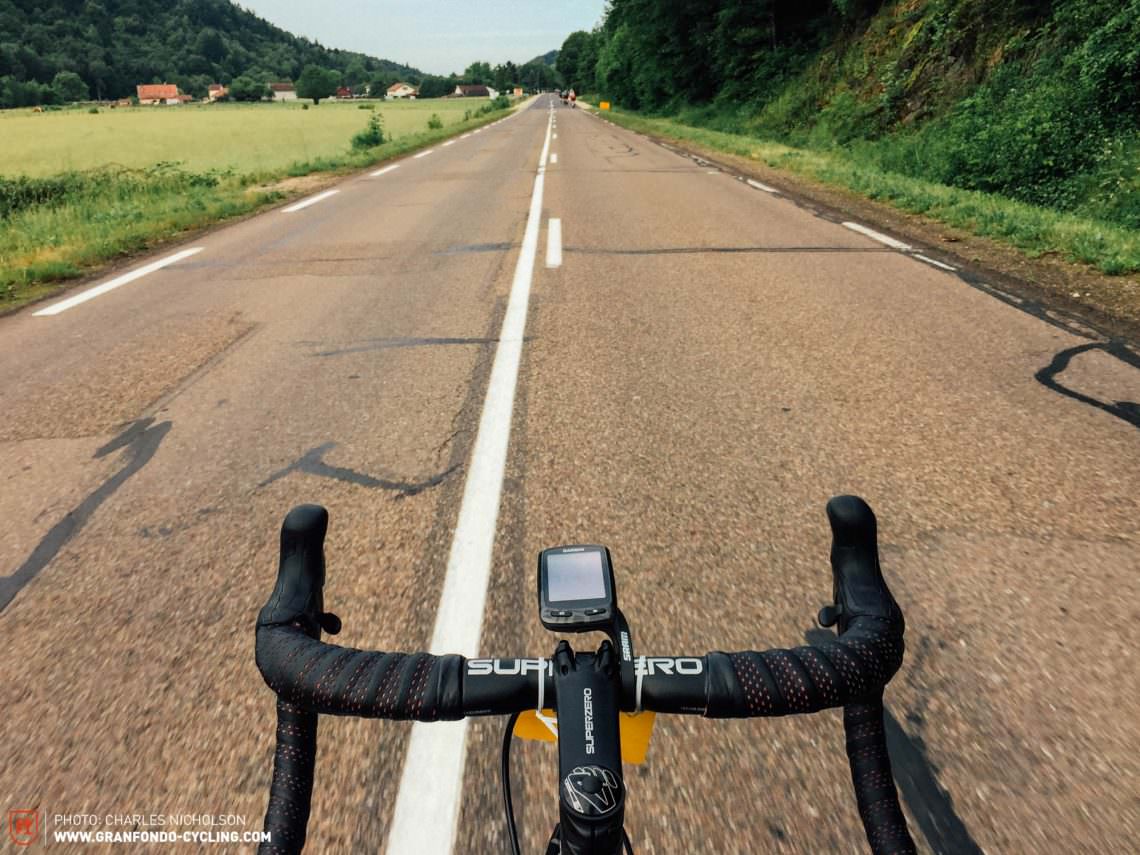
So what’s new with the Ridley Fenix?
This new Ridley Fenix SLX is released as a disc only model and is designed for both long hours in the saddle and aggressive attacks and sprints. Retaining a very similar geometry to the Helium, this model pitches itself as much a thoroughbred racer as the Helium but with disc brakes while the Helium SLX is available as rim brake only. The seat stays have been lowered to provide greater compliance which provides a good balance between shock absorption and stiffness, ideal for when the tarmac gives way to gravel.

The complete bike minus pedals comes in at a respectable 7.90 kg. This is thanks to a reputed 250 gram saving on the frame weight over the previous SL bringing it down to 840 grams for a size medium. It aspires to be a perfectly balanced all-round performance bike, and before long it is easy to see why.
The Fenix SLX official release models will differ slightly to those in our test fleet but there are plenty of options. Shimano Ultegra is teamed up with DT Swiss R24 wheels, Rotor 3D30 crank and a 4ZA Cirrus finishing kit for €4299. Shimano Ultegra Di2 will come with the new 4ZA 45 mm carbon wheels, Rotor 3D+ and DT SWiss 350 hubs and a 4ZA Cirrus Pro finishing kit at €6799. The Campagnolo Potenza spec which we tested – but with a Rotor 3D30 crank – uses the Campagnolo Zonda db wheelset and a Deda SuperZero finishing kit for €5799.
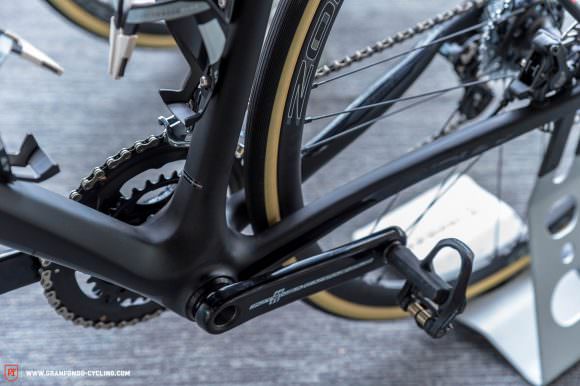

Pricing is competitive then compared with other big name competitors and quite frankly its versatility should keep you more than satisfied for many years, unless you’re the particularly restless type. It is the sort of bike which encourages you to push your own limits without feeling out of control.
In addition to the stock models, it is also available as part of the Ridley Dreambuilder allowing you to spec it out to your hearts content with high end groupsets like Shimano Dura Ace and Di2, Sram Red Etap or Campagnolo Chorus EPS or Chorus.
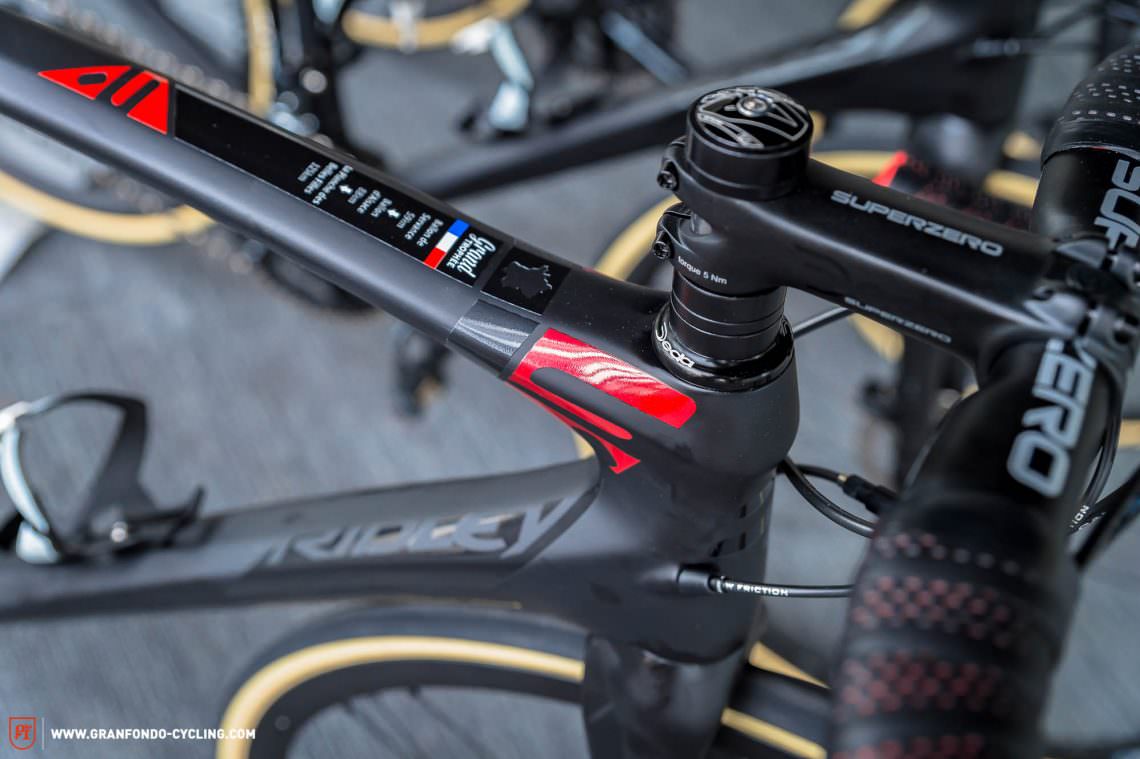
Despite an initial wariness about riding an unfamiliar bike over such a long and difficult ride, once settled into the rhythm it felt comfortable and capable. The top tube does feel on the longer side, with a horizontal length of 565 mm on the medium frame with a 540 mm seat tube, but it is very manageable with a more considered set up… in other words bucking the slamming trend and adopting a proud stack of spacers instead.
Campagnolo Potenza—the Potential for Greatness
The test fleet was equipped with the latest Campagnolo Potenza groupset and hydraulic disc brakes including the newly designed Potenza Disc hoods which sit 8 mm taller than before to accommodate the hydraulic cylinder. Shifting gears is an impeccably smooth and satisfying experience and the discs offered superbly efficient braking with no judder or unexpected biting. A serious gripe though is with trigger shift on the hoods. The trigger has been moved very far back requiring you to rotate your palm to shift up the cassette or down a chainring. Over long distance this does become quite tiresome! It’s especially frustrating considering how ergonomically well designed the rest of the unit is in particular the lever which you can reach with a single finger and apply the brakes with confidence.

The Campagnolo Zonda wheels suffer the same fate as the levers with a small chink in the armour of an otherwise great design. While stiffness is maintained even under heavy braking and aggressive cornering, it is disappointing to see Campagnolo not moving with the times and adopting a wider rim bed. As much as it is not a significant issue, it is a sticking point for rider confidence and cornering ability. It would be great to see this development made for subsequent models especially as the trend for 25 and 28c tyres continues to gain momentum.
Vittoria Graphene – The Gravel Challenge
Fortunately the saving grace of the narrow rim bed was the absolutely excellent Vittoria Corsa Graphene 25 mm tyres. With minimal tread and a supple shape you would be excused for thinking they will wither away at even the slightest hint of deviations in the road surface. Quite the contrary though! Thanks to the cotton casing they are designed to deform and offer a more consistent contact with the road surface regardless of how rough it is. The secret ingredient is a material called Graphene – which by the way won the Nobel Prize in 2010! In short it is 200x stronger than steel and 6x more flexible so combined with their specific application process of the graphene into the tyres, it provides a phenomenal balance of comfort, performance and durability.
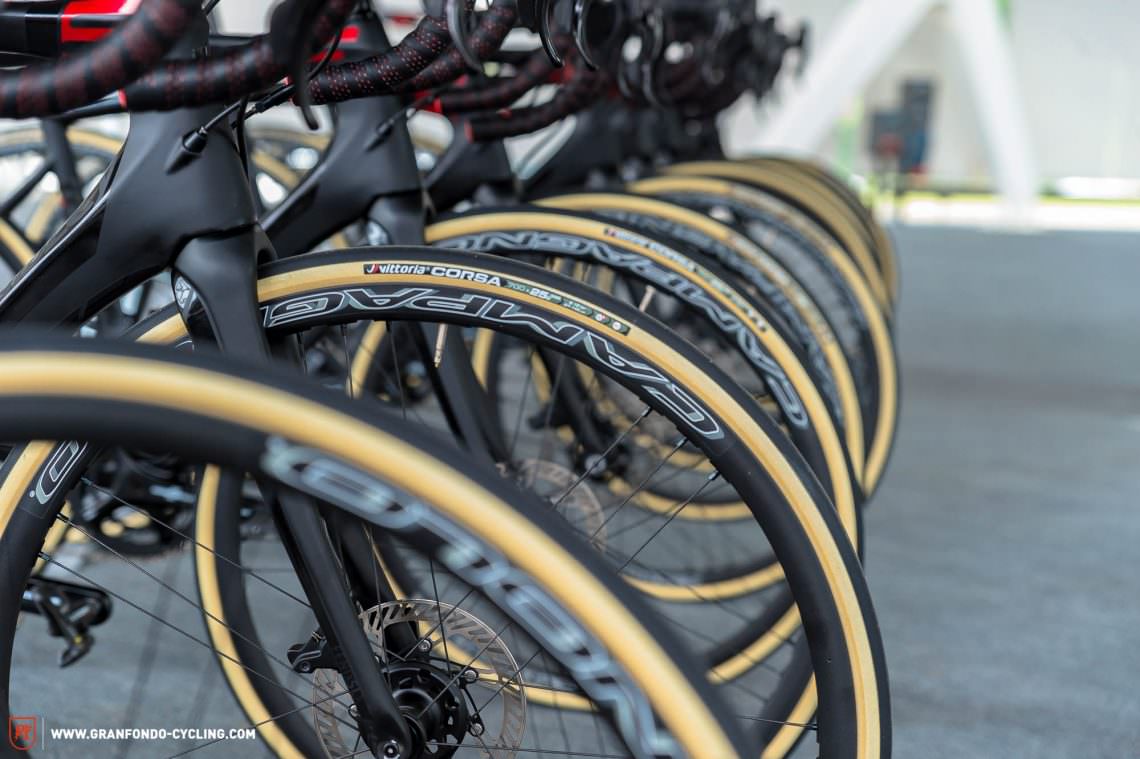
The Grand Ballon descent proved to be the perfect test as 60kph descents over dusty gravel met hairpin pave corners. With a horrendous combination of force on the bike exiting the corners with the rear triangle’s compliance optimized shape working hard to stabilize the bike and the stiffness being tested in acceleration, it is safe to say the combination of frame adjustments, the stiffness in the wheels and relentless grip of the Vittoria tyres met all expectations. One slight disappointment though is that the Vittoria Corsa Graphene 25 mm tyres on the test fleet will not come as standard with the stock models, instead being replaced with the Vittoria Rubino Pro 28 mm.
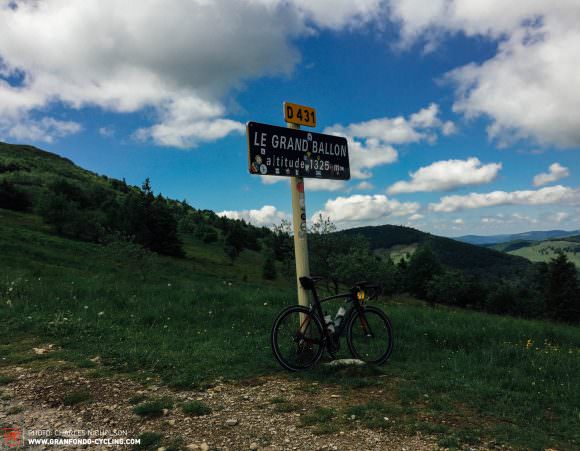
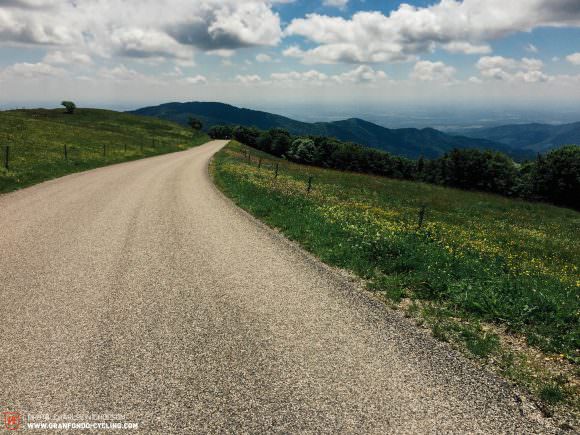

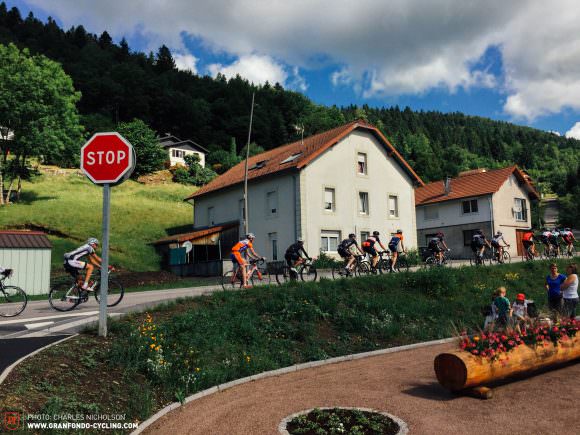
With such an ominous gradient profile of climb after climb and not a single stretch of flat very clear on the route map, the Ridley Les 3 Ballons is certainly not for the faint hearted and at times the temptation is very strong to give up. But being surrounded by such a diverse group of cyclists, of all abilities, ages and even one guy doing the whole thing on a single speed (!!!!) you quickly realise this isn’t a race. Think of it as a competitive tour through a magical region of France complete with food stops offering ham and brie in baguettes — you do find yourself lusting after a glass of wine.
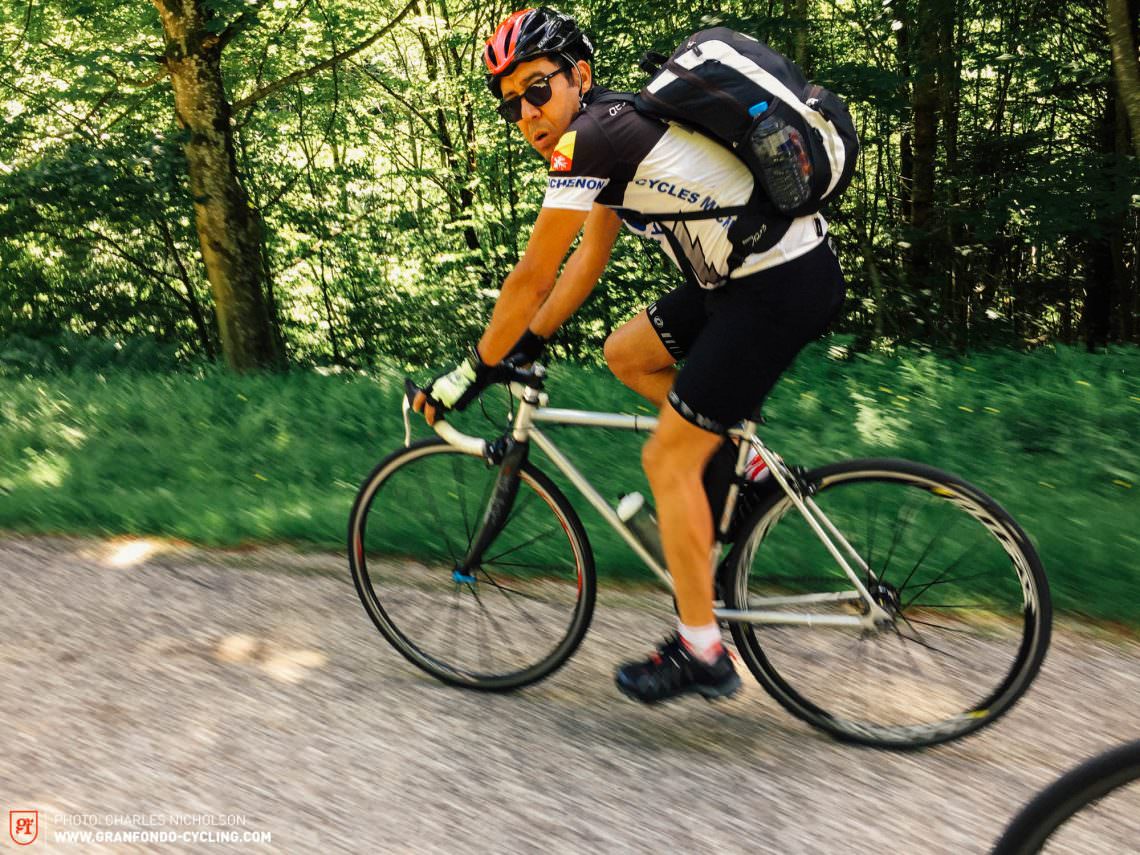
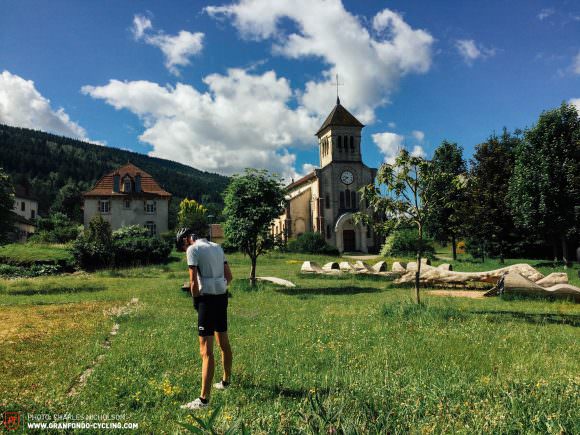

It is very reassuring to see a major bike manufacturer with a strong presence in grand tours taking such a confident stance on disc brakes by making this a disc only frame. Yes the Ridley Fenix SLX aims to be an “all-rounder” which has long been a taboo statement used as a smokescreen for compromise, but this really is not. It is just as much suited to a beginner looking to improve as it is to a well seasoned racer. The diversity of applications, raw performance ability and future proof nature of this bike makes riding it a real pleasure to ride.
Did you enjoy this article? If so, we would be stoked if you decide to support us with a monthly contribution. By becoming a supporter of GRAN FONDO, you will help secure a sustainable future for high-quality cycling journalism. Click here to learn more.
Words: Charles Nicholson Photos: Charles Nicholson / Ridley






